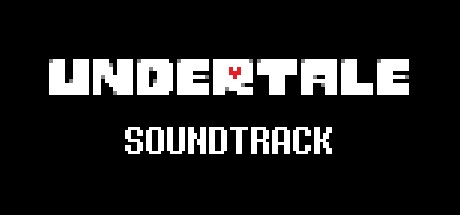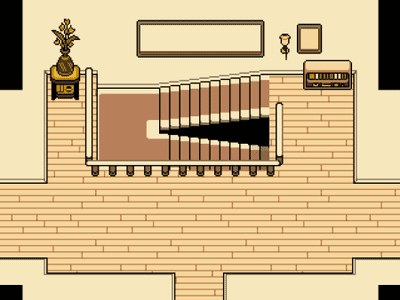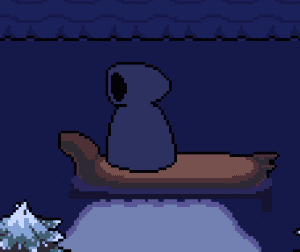
Original post here: http://jasonyu.me/undertale-part-1/
By @jasonmyu
---
This is the 1st half of a 2-part article on leitmotifs in UNDERTALE and how they inform the narrative.
---
Introduction:
UNDERTALE is an indie role-playing game that released earlier this year in September, and has quickly become one of my favorite games of all time. The soundtrack is easily one of my favorite works of music, ever. If you haven't played UNDERTALE yet, I highly urge you to do so. In fact, if you haven't played or finished all of the game, this article will make very little sense and will contain many spoilers, so there's not much reason to keep reading. Turn back now.
For those of you who have played the game, there's not much else to be said. You know what's up. Let's take a closer look at one of the best video game soundtracks of all time.
---
On Reading Music for Non-Musicians:
Throughout this article I use written (scored) examples to illustrate certain patterns and themes that occur in the soundtrack. I realize that many people are not able to read music---but luckily I think musical notation is actually intuitive enough that being able to see the contour of a phrase is enough to get my points across. If you don't know what I mean, just remember this: when notes move upwards on the staff, they move up in pitch, and when notes move downwards on the staff, they move down in pitch. If you can just keep that simple idea in mind, I think you will be surprised at how easily you can follow along with the music.
(Lastly, all of my notation was done in C Maj/A min for ease of reading...apologies to my perfect-pitch readers.)
---
On Leitmotifs:
To quote Wikipedia: "A leitmotif is a short, constantly recurring musical phrase associated with a particular person, place, or idea." Perhaps the best example of this in popular culture is in Star Wars---when the Imperial March plays, you know Darth Vader is going to show up. The Imperial March is a leitmotif that is associated with the character of Darth Vader.
UNDERTALE is full of leitmotifs that fit all 3 definition types. There are leitmotifs that refer to certain characters, certain areas of the game, and larger ideas and themes that run through the game as a whole. My goal with this article is to show the different ways leitmotifs are used in UNDERTALE, how they affect one's experience with the game, and how a game soundtrack can do much, much more than just provide catchy background music.
---
Leitmotif to Elicit A Feeling of "Home": The Undertale Theme

Though most video game soundtracks have a variety of memorable melodies, there's always only one we can call the "Theme" of the game. Mario, Zelda, Pokemon---despite the huge variety of music associated with these games, we all know what the Main Theme for each of those franchises are. In UNDERTALE, the Main Theme is this:
001. Once Upon a Time
<iframe title="Undertale OST: 001 - Once Upon A Time" src="//www.youtube-nocookie.com/embed/s7RRgF5Ve_E?enablejsapi=1&origin=https%3A%2F%2Fwww.gamedeveloper.com" height="100px" width="100%" data-testid="iframe" loading="lazy" scrolling="auto" data-gtm-yt-inspected-91172384_163="true" id="98195506" data-gtm-yt-inspected-91172384_165="true" data-gtm-yt-inspected-113="true"></iframe>Undertale Theme at 0:00:
Like many great motifs, its strength lies in its simplicity and mutability, which is what helps give rise all the different variations we hear in the soundtrack. In fact, this simple motif shows up as the main melody in no less than 13 tracks in the game, and makes appearances in many others.
The first example of this is actually the very next track:
002. Start Menu
<iframe title="Undertale OST: 002 - Start Menu" src="//www.youtube-nocookie.com/embed/kRT9vY2f7tg?rel=0&enablejsapi=1&origin=https%3A%2F%2Fwww.gamedeveloper.com" height="100px" width="100%" data-testid="iframe" loading="lazy" scrolling="auto" data-gtm-yt-inspected-91172384_163="true" id="659579587" data-gtm-yt-inspected-91172384_165="true" data-gtm-yt-inspected-113="true"></iframe>Undertale Theme at 0:00:
The Start Menu music is an extremely stripped down treatment of the Undertale Theme with just the melody line and nothing else. (The chiptune instrumentation makes this track reminiscent of the old Gameboy Zelda start menus.)
Though it's only two tracks, at this point most experienced players will have subconsciously or consciously identified the Main Theme as such. That moment of identification is important because it creates an anchor in the player's mind---the Undertale Theme is now a familiar tune in a world of potentially new and different and scary possibilities. As a result, when you hear the Main Theme again, all of the ideas and emotions associated with that theme are brought back and re-purposed in the new context.
In UNDERTALE, the Main Theme is used to elicit a sense of home and safety, and to serve as checkpoints for the player at critical points in the game.
012. Home / 013. Home (Music Box)
<iframe title="Embedded content" src="//www.youtube-nocookie.com/embed/5_E_y1AWAfc?rel=0&enablejsapi=1&origin=https%3A%2F%2Fwww.gamedeveloper.com" height="100px" width="100%" data-testid="iframe" loading="lazy" scrolling="auto" data-gtm-yt-inspected-91172384_163="true" id="926981373" data-gtm-yt-inspected-91172384_165="true" data-gtm-yt-inspected-113="true"></iframe><iframe title="Embedded content" src="//www.youtube-nocookie.com/embed/ANEsXjSiYxI?rel=0&enablejsapi=1&origin=https%3A%2F%2Fwww.gamedeveloper.com" height="100px" width="100%" data-testid="iframe" loading="lazy" scrolling="auto" data-gtm-yt-inspected-91172384_163="true" id="910849890" data-gtm-yt-inspected-91172384_165="true" data-gtm-yt-inspected-113="true"></iframe>Undertale Theme at 0:37:
This is the first time the Main Theme appears once you've actually started the game. It makes sense from a narrative point of view---you've just been traumatized by Flowey, you've wandered through the Ruins, and now, finally, you've found a safe place. Again, whether the recognition of the theme is conscious or subconscious, the return of the Undertale Theme here reinforces the feeling of familiarity in contrast with all of the new experiences the player has just had. The gentle guitar treatment of the theme and the soft yellow palette of the area reinforce the feeling of safety.
After Home, the Undertale Theme disappears for quite a while until near the end of the game:
054. Hotel
<iframe title="Embedded content" src="//www.youtube-nocookie.com/embed/8wSYwqbp4S4?rel=0&enablejsapi=1&origin=https%3A%2F%2Fwww.gamedeveloper.com" height="100px" width="100%" data-testid="iframe" loading="lazy" scrolling="auto" data-gtm-yt-inspected-91172384_163="true" id="941018934" data-gtm-yt-inspected-91172384_165="true" data-gtm-yt-inspected-113="true"></iframe>Undertale Theme at 0:20:
055. Can You Really Call This A Hotel, I Didn't Receive A Mint On My Pillow Or Anything
<iframe title="Embedded content" src="//www.youtube-nocookie.com/embed/wRUdj1WgwIE?rel=0&enablejsapi=1&origin=https%3A%2F%2Fwww.gamedeveloper.com" height="100px" width="100%" data-testid="iframe" loading="lazy" scrolling="auto" data-gtm-yt-inspected-91172384_163="true" id="836954452" data-gtm-yt-inspected-91172384_165="true" data-gtm-yt-inspected-113="true"></iframe>Undertale Theme at 0:15:
Though technically "Hotel" first plays during the Mettaton cooking show, the area where we mainly hear this tune is in the hotel before the Core. Though it's not quite the comfort of Home, the hotel is nevertheless immediately recognized as a "safe place" that you've arrived at after a great deal of wandering through dangerous territory (Hotland in this case). And of course, the obvious choice for instrumentation and style here is Muzak.
There's a cool bit of mirroring here with where 012. Home and 054. Hotel happen to be in the game: the two places where we hear the Undertale Theme are right AFTER Ruins, the first area, and right BEFORE the Core, the last area. [Think about the enemies in the Ruins (Froggit, Whimsun, Loox) vs the Core (Final Froggit, Whimsalot, Astigmatism).]
Then, of course, there's the recapitulation of 012. Home with 071. Undertale in New Home. As everything after the Long Elevator I consider "Endgame," we'll devote a whole section to that in Part 2.
071. Undertale
<iframe title="Embedded content" src="//www.youtube-nocookie.com/embed/EBhFHJMVfiI?rel=0&enablejsapi=1&origin=https%3A%2F%2Fwww.gamedeveloper.com" height="100px" width="100%" data-testid="iframe" loading="lazy" scrolling="auto" data-gtm-yt-inspected-91172384_163="true" id="243014705" data-gtm-yt-inspected-91172384_165="true" data-gtm-yt-inspected-113="true"></iframe>Undertale Theme at 0:37:
Don't you immediately feel at home?
---
Leitmotif as Structural Markers, Establishing Continuity, and World Building

In most games, but especially in RPGs, music tracks are often separated into their functions: music for a location, music for a character, music for random encounters. When done well, the music that serves a specific game element (locale, character, etc.) accurately represents the look and feel of that element, and as players we quickly learn to associate a piece of music with its corresponding area. For many games, this means that you get a variety of music in wildly different styles because generally games (or at least RPGs in this style) want to create distinct areas of the game, each with their own flavor. Take, for instance, the difference between two Overworld tracks in Chrono Trigger:
Wind Scene (600 A.D.)
<iframe title="Embedded content" src="//www.youtube-nocookie.com/embed/hELte7HgL2Y?rel=0&enablejsapi=1&origin=https%3A%2F%2Fwww.gamedeveloper.com" height="100px" width="100%" data-testid="iframe" loading="lazy" scrolling="auto" data-gtm-yt-inspected-91172384_163="true" id="330342977" data-gtm-yt-inspected-91172384_165="true" data-gtm-yt-inspected-113="true"></iframe>Ruined World (2300 A.D.)
<iframe title="Embedded content" src="//www.youtube-nocookie.com/embed/tJ_Z9bFmZWs?rel=0&enablejsapi=1&origin=https%3A%2F%2Fwww.gamedeveloper.com" height="100px" width="100%" data-testid="iframe" loading="lazy" scrolling="auto" data-gtm-yt-inspected-91172384_163="true" id="967640950" data-gtm-yt-inspected-91172384_165="true" data-gtm-yt-inspected-113="true"></iframe>UNDERTALE's soundtrack is no different in its goals---but what makes UNDERTALE so interesting is that despite the variety of music in the soundtrack, the actual amount of musical material is astonishingly economical.
Sometimes in a game you'll come to a new area and be jarred by the "newness" of everything---a good example that comes to mind is when you first enter Gerudo Valley in Ocarina of Time. The music for Gerudo Valley is so different stylistically from almost everything else in the game up to that point (suddenly Spanish guitar, after almost exclusively orchestral instrumentation) that you're immediately alerted to the fact that you've just entered a new area.
Playing through UNDERTALE, you get the sense that although you are traveling through different environments, you're still in the same world you started in. Part of that is no doubt due to the fact that the game is short, but I think that there are just enough subtle hints in the soundtrack to make a listener go "oh, this is different, but also familiar...it makes sense that I'm hearing this."
In this section, we'll look at the various areas of the game and their backing tracks, and how they relate and reinforce a sense of structure and continuity.
005. Ruins
<iframe title="Embedded content" src="//www.youtube-nocookie.com/embed/QyPR77rg1to?rel=0&enablejsapi=1&origin=https%3A%2F%2Fwww.gamedeveloper.com" height="100px" width="100%" data-testid="iframe" loading="lazy" scrolling="auto" data-gtm-yt-inspected-91172384_163="true" id="32634696" data-gtm-yt-inspected-91172384_165="true" data-gtm-yt-inspected-113="true"></iframe>Overworld Ostinato at 0:00:


































